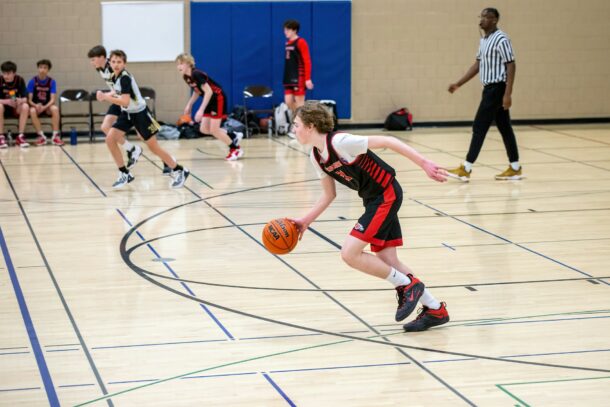As a veteran basketball coach, I’ve seen firsthand the transformative power of well-designed drills in shaping young players’ skills and game understanding. One such drill that has consistently yielded remarkable results is the 3-on-2 Continuation Basketball Drill. In this article, I’ll delve into the specifics of this drill, its benefits, and how you can effectively implement it with your youth basketball team.
Understanding the 3-on-2 Continuation Drill
The 3-on-2 Continuation Drill is designed to enhance players’ transition offense and defense skills while promoting quick decision-making and teamwork. It involves two defensive players and four offensive players, with continuous three-on-two scenarios occurring up and down the court.
Key Elements:
- Pace and Scoring: The drill emphasizes scoring at a high pace, encouraging players to capitalize on offensive opportunities. This rapid-fire approach keeps players engaged and fosters a competitive spirit.
- Tracking Points per Possession: To gauge progress and performance, it’s crucial to track points per possession. This metric provides valuable insights into offensive efficiency and helps identify areas for improvement.
- Defensive Variations: Experiment with different defensive setups to challenge players and simulate game scenarios effectively. Avoiding common defensive formations like the one-one stack keeps the drill dynamic and prepares players for real-game situations.
- Transition Movement and Spacing: Encourage players to focus on their movement and spacing during transitions. Emphasize the importance of creating open passing lanes and avoiding congested areas, ultimately leading to more efficient scoring opportunities.
 The Best Senior Night Gifts!
The Best Senior Night Gifts!
Make an impact with your players this year! This is a made to order painting on stretched canvas signed by the artist, Candice Griffy. Choose your own colors, name and number for this unique piece of artwork! The canvas has stapled back and is ready to hang directly on the wall so there is no need for further framing!
Use promo code TEACHHOOPS15 for 15% off at CandiceGriffyDesigns.com!
Implementing the 3-on-2 Continuation Drill
When introducing the 3-on-2 Continuation Drill to your youth basketball team, consider the following tips:
- Start with clear instructions and demonstration to ensure players understand the objectives and mechanics of the drill.
- Emphasize fundamentals such as ball handling, passing, and finishing at the rim within the context of the drill.
- Provide constructive feedback during and after the drill, highlighting areas of improvement and celebrating successes.
- Encourage communication among players to enhance teamwork and decision-making on both offense and defense.
Benefits
Integrating the 3-on-2 Continuation Drill into your coaching regimen offers numerous benefits for youth basketball players:
- Improved Transition Offense and Defense: Players learn to quickly transition between offense and defense, honing their reaction time and positioning skills.
- Enhanced Decision-Making: The fast-paced nature of the drill forces players to make split-second decisions, promoting better basketball IQ and situational awareness.
- Increased Team Chemistry: By working together to score and defend, players develop stronger bonds and communication skills essential for success on the court.
- Game-Ready Skills: The drill replicates game-like scenarios, providing players with invaluable experience and confidence to perform under pressure.
Conclusion
The 3-on-2 Continuation Basketball Drill is a game-changer for youth teams looking to elevate their skills and performance on the court. By incorporating this drill into your coaching repertoire and focusing on key elements such as pace, tracking, defensive variations, and transition movement, you can empower your players to reach their full potential and achieve success in game situations.
Related: Pros and Cons of AAU Youth Player Rankings
Coach Unplugged Podcast:

Free Basketball Coaching Resources
If you found this useful, don’t forget to check out additional blog posts at TeachHoops.com. Also, check out TeachHoops on Facebook, Twitter, Instagram and YouTube.






